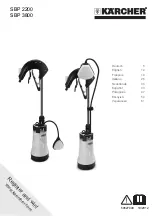
14
Coplanar Alignment
Follow steps 1–5 to determine if alignment is
necessary. Steps 6–9 will guide you through the
alignment if required.
Verifying that fences are coplanar
1. Remove the guard and spindle attachment.
2. Unlock
knobs
D
1
, D
2
and adjust the
fence
assembly
(A) so it is positioned approximately
at midpoint; then secure
lock knobs
D
1
, D
2
.
3. Place
a
straightedge
(H) on the table against
the
infeed
and
outfeed fences
(F
1
, F
2
).
4. Unlock the ram dial
lock knob
(B).
5. With
the
ram adjust dial
(C) adjust the position
of the
outfeed fence
(G
2
) while at the same
time pressing against the
straightedge
(H) and
attempting to bring both fences (G
1
, G
2
) in-line
with the straightedge.
Note:
The
outfeed fence casting
(F
2
) is adjust-
able while the
infeed fence casting
(F
1
) is
stationary and cannot be adjusted.
No adjustment is required
if both fences (G
1
, G
2
)
are
flush with the straightedge as shown in
Figure 5. Proceed to the
Ram Dial Calibration
section on page 15.
Adjustment is required
if the fences appear
skewed (Figure 6). Continue with
the
steps below.
Coplanar Adjustment
6. Remove both fences (J
1
, J
2
) and place the
straightedge against the infeed and outfeed
fence castings (Figure 7).
Read
step 7
completely before attempting.
7. Maintain steady pressure of the straightedge
against the fence castings (K, Fig. 7). At the
same time, attempt to bring both fences into
alignment as shown in Figure 8. This is
accomplished by alternately making increment-
al adjustments to two
setscrews
(M, Fig. 9) on
the front face of the
casting
(L, Fig. 9) with a
3mm hex wrench, followed by repositioning the
casting with the
ram adjust dial
(Q, Fig. 9) as
required.
Important:
It is recommended that the
adjustment setscrews (M, Fig. 9) be rotated in
1/16th increments or less at a time.
Figure 5
Figure 6
Figure 7
Figure 8
Figure 9















































